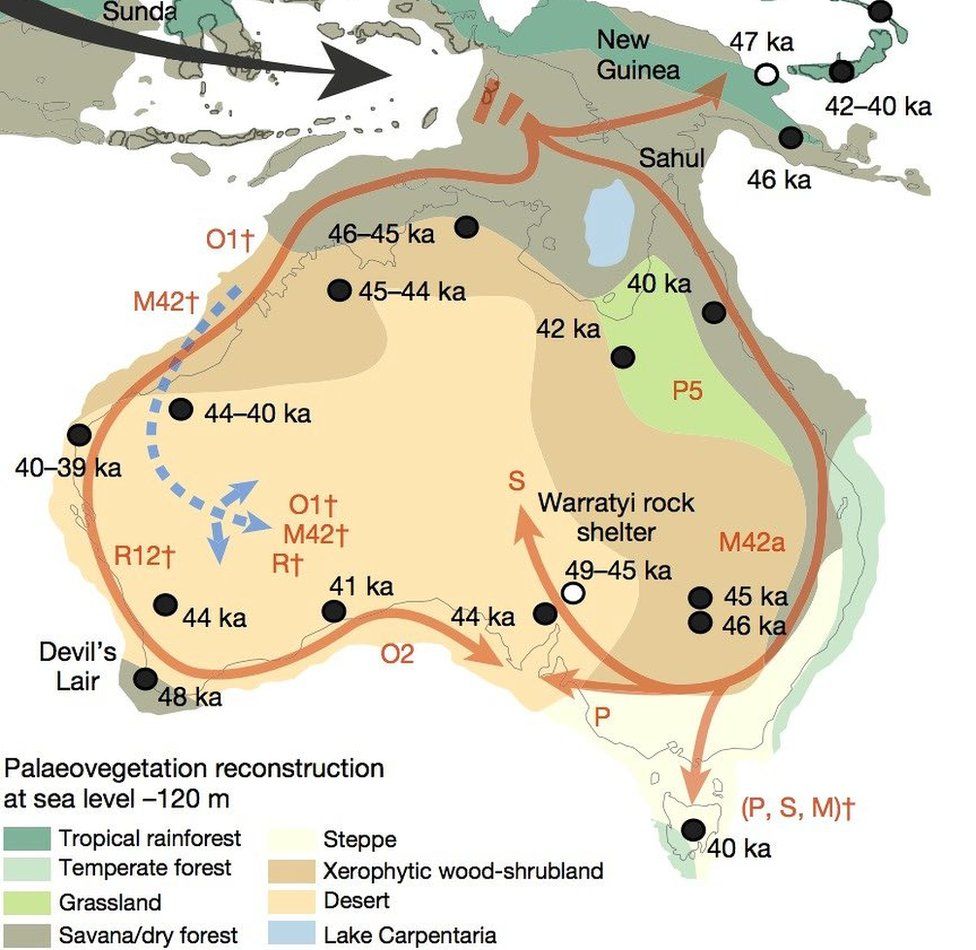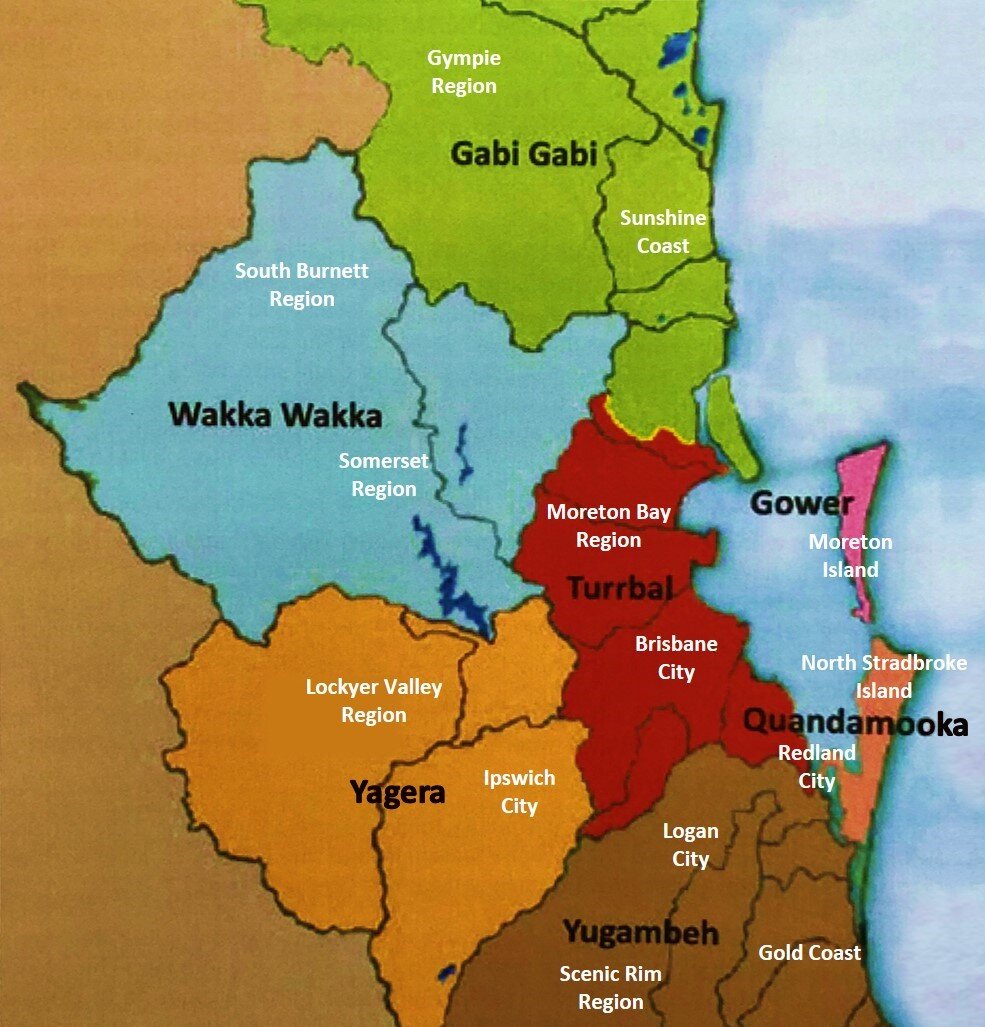Uncovering the Tapestry of Time: A Journey Through the Aboriginal Map of Australia
Uncovering the Tapestry of Time: A Journey Through the Aboriginal Map of Australia

Australia, a land of vast deserts, lush rainforests, and rugged coastlines, holds a captivating story woven into its very fabric. This story, however, is not one solely told by European explorers or colonial narratives. It is a story that stretches back millennia, etched in the very landscape itself, and carried within the intricate knowledge systems of its First Peoples, the Aboriginal Australians.
The concept of a "map" in the Western sense, with its reliance on precise coordinates and cartographic projections, may not readily apply to the intricate understanding of the land held by Aboriginal Australians. Instead, their knowledge is a complex tapestry woven from generations of observation, experience, and deep connection to the land, expressed through a language of symbols, stories, and rituals. This article delves into the fascinating world of the Aboriginal map of Australia, exploring its unique features, significance, and the crucial role it plays in understanding the history and culture of the continent.
Related Articles: Uncovering the Tapestry of Time: A Journey Through the Aboriginal Map of Australia
- A Taste Of Tradition: Exploring Culinary Expressions And Indigenous Tribes In Australia
- The Rhythms Of The Land: Exploring The Diverse World Of Aboriginal Musical Instruments In Australia
- Unfurling The Symbol: How The Aboriginal Flag Represents Cultural Connection
- The Land Rights Act Of 1976: A Landmark In Australian Indigenous Land Recognition
- The Timeless Art Of Australian Aboriginal Wood Decor Masks: A Window Into Ancient Culture
Beyond Lines and Coordinates: The Aboriginal Understanding of Land
For Aboriginal Australians, the land is not simply a resource to be exploited but a living entity, a source of life and sustenance, and a repository of ancestral knowledge. Their understanding of the land is deeply intertwined with their spiritual beliefs, ancestral connections, and intricate knowledge systems. This knowledge, passed down through generations, is not confined to a single map but is embedded within the very landscape itself.
A Multifaceted Language of Place
The Aboriginal map of Australia is not a static, two-dimensional representation. It is a dynamic, multifaceted system of knowledge that encompasses:
- Songlines: These are intricate narratives embedded within the landscape, passed down through generations. They detail ancestral journeys, creation stories, and the relationships between different places and beings.
- Dreaming Tracks: These are paths of ancestral beings, often depicted through rock art, that connect different parts of the land. They represent the creation of the land and its features, as well as the responsibilities and obligations of the different Aboriginal groups to the land.
- Totemic Systems: Aboriginal communities have strong connections to specific animals, plants, and natural features, known as totems. These totems represent a deep spiritual connection to the land and its resources.
- Land Management Practices: Aboriginal Australians developed sophisticated systems of land management, including fire management, resource conservation, and sustainable hunting and gathering practices, which are reflected in their understanding of the land.

Decoding the Tapestry: Reading the Aboriginal Map
To understand the Aboriginal map of Australia, one must learn to read the language of the land itself. This involves:
- Observing the Landscape: Recognizing the significance of natural features like mountains, rivers, and rock formations. These features often hold specific meanings and stories within the Aboriginal understanding of the land.
- Listening to the Stories: Engaging with the oral histories and songlines of different Aboriginal communities. These stories reveal the ancestral journeys, creation events, and relationships between different places and beings.
- Interpreting the Rock Art: Rock art, a prominent feature across the Australian landscape, provides visual representations of ancestral beings, creation stories, and significant events.
- Respecting the Land: Recognizing the importance of respecting the land and its cultural significance. This includes seeking permission from traditional owners before accessing or exploring sacred sites.


The Importance of Recognizing the Aboriginal Map
Understanding the Aboriginal map of Australia is crucial for several reasons:
- Reclaiming Indigenous Knowledge: It acknowledges the depth and complexity of Aboriginal knowledge systems and challenges Eurocentric perspectives on the history and understanding of the continent.
- Promoting Reconciliation: It recognizes the ongoing connection of Aboriginal Australians to their land and promotes respect for their cultural heritage.
- Preserving Cultural Diversity: It highlights the importance of preserving the unique knowledge and traditions of Aboriginal communities, which are integral to their cultural identity and well-being.
- Informing Environmental Management: It provides valuable insights into sustainable land management practices and the interconnectedness of all living things.
Beyond the Map: The Ongoing Struggle for Recognition
Despite the rich tapestry of knowledge embodied within the Aboriginal map of Australia, the struggle for recognition and respect for Indigenous knowledge continues. This struggle involves:
- Challenging Colonial Narratives: Reclaiming the history of the continent from Eurocentric perspectives that often erased or marginalized Indigenous voices.
- Protecting Sacred Sites: Advocating for the protection of sacred sites and cultural heritage from exploitation and desecration.
- Promoting Indigenous Land Rights: Supporting the rights of Aboriginal Australians to manage and control their traditional lands.
- Empowering Indigenous Communities: Providing opportunities for Indigenous communities to share their knowledge and participate in decision-making processes that affect their lands and cultures.
The Aboriginal map of Australia is not simply a historical artifact; it is a living testament to the resilience, knowledge, and cultural richness of the First Peoples of this land. By engaging with this map, we can gain a deeper understanding of the continent’s history, its intricate connections, and the importance of respecting and preserving the cultural heritage of its Indigenous inhabitants.
FAQs about the Aboriginal Map of Australia
1. What is the difference between the Aboriginal map and a Western map?
The Aboriginal map is not a static, two-dimensional representation like a Western map. It is a dynamic, multifaceted system of knowledge that encompasses songlines, dreaming tracks, totemic systems, and land management practices. It is embedded within the landscape itself and is passed down through generations.
2. How can I learn more about the Aboriginal map?
You can learn more by engaging with the oral histories and songlines of different Aboriginal communities, interpreting rock art, and visiting cultural centers and museums dedicated to Aboriginal art and culture.
3. What is the importance of respecting the Aboriginal map?
Respecting the Aboriginal map involves acknowledging the cultural significance of the land, seeking permission from traditional owners before accessing sacred sites, and supporting Indigenous land rights.
4. What is the current status of the Aboriginal map in Australia?
The Aboriginal map is facing challenges due to the ongoing struggle for recognition and respect for Indigenous knowledge. It is essential to continue advocating for the protection of sacred sites, the recognition of Indigenous land rights, and the empowerment of Indigenous communities.
5. How can I contribute to preserving the Aboriginal map?
You can contribute by supporting Indigenous-led initiatives, learning about Aboriginal culture and history, and advocating for the recognition and preservation of Indigenous knowledge.

Closure
Thus, we hope this article has provided valuable insights into Uncovering the Tapestry of Time: A Journey Through the Aboriginal Map of Australia. We appreciate your attention to our article. See you in our next article!


